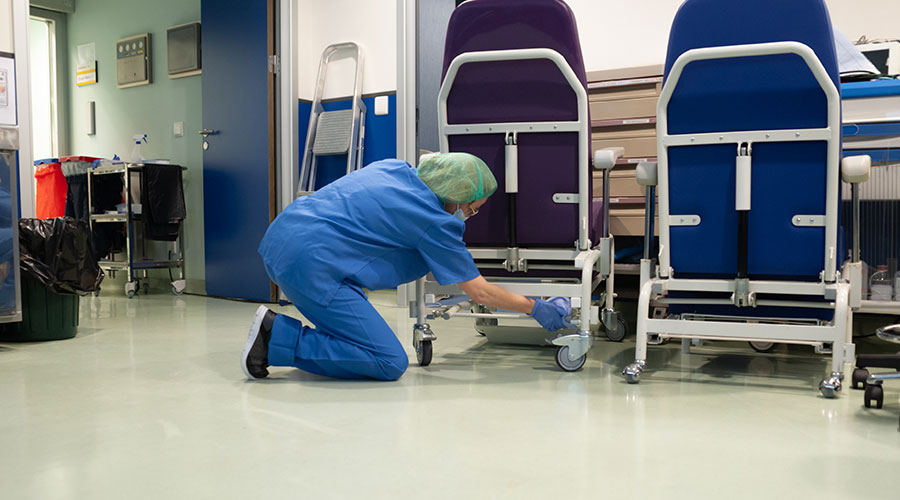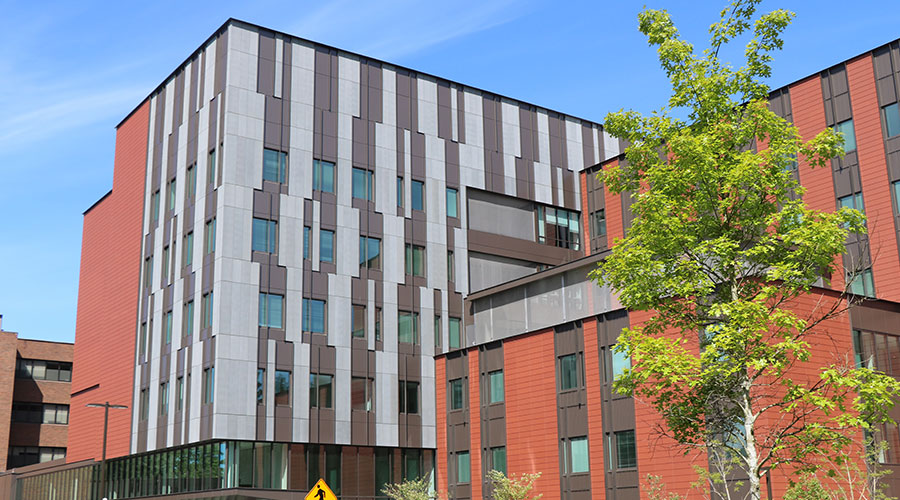Healthcare providers are determined to improve the quality of patient care. A close second only to an all-star team of medical professionals, healthcare facilities are an integral component of a superior patient experience. The environment of care can holistically meet the needs of patients and medical staff to provide a complete and inclusive experience. For this reason, the design and management of clinical and non-clinical spaces has become critical to executing a thoughtful and effective strategy.
To help achieve these goals, healthcare facility managers need to ensure clinical spaces meet these high standards. Armed with a deep understanding of evolving industry expectations, management teams must optimize facilities through a co-creation strategy, collaborating with stakeholders throughout their organizations to create safe, supportive and healing environments.
Patient expectations
Patients are consumers, and they are more educated than ever about healthcare systems. With this knowledge has come the power to choose their providers and dictate their experiences. Above all, people want spaces that are easy to understand, safe, peaceful and welcoming.
After meeting the extensive regulatory requirements for healthcare properties, facility managers need to create human-first spaces by curating a mix of environments that include waiting rooms, common areas and examination rooms. The experience begins with aesthetics, crafted through careful attention to design, and color choices. It continues by cultivating a soothing atmosphere with white noise and quiet spaces.
Facility managers also need to work with teams to ensure patients and their loved ones have round-the-clock access to healthy food options, patient and family services and ancillary amenities to promote wellness, including lactation rooms and fitness centers. The facility also should be easy to navigate and host a variety of different people from diverse backgrounds. Community input is another critical step in creating an environment of care that is inclusive and well thought out.
Facilities as recruiting tools
Healthcare organizations are equally dedicated to creating positive workplace environments for staff. The industry is suffering from a severe worker shortage. The United States will be short 124,000 clinical professionals by 2034, according to the Association of Medical Colleges. Providers are vigorously competing for workers, and while compensation has increased 60 percent since 2019, the workplace remains a critical factor in recruitment and retention.
Just like patients, staff members want safe properties that are easy to navigate and provide access to the tools that they need to provide quality care and innovation. A supportive environment features rest spaces and privacy nodes for workers, who often have long shifts. Some facilities also have begun to include onsite childcare, alternative meal options and no-charge coffee or snacks as additional comforts that contribute to a positive workplace environment and better overall patient experience.
Collaborating for success
The best and most successful way to uncover nuanced patient and team member needs and to design a facility that reflects those expectations is to use a co-creation strategy. No one person or one team can figure it out alone. Gathering all stakeholders at the table early is essential to creating a well-rounded environment of care, whether the project is a ground-up construction or the redevelopment of an existing facility.
Collaboration begins when facility managers work with a broader range of internal and external experts. At a high level, managers engage with executive leadership and third-party partners, including construction teams and architects. But a successful co-creation strategy taps the expertise of employees at every level of the organization and the community.
Facility managers need to work closely with clinical and non-clinical staff, administrators and strategic partners, such as security teams, to gain insights into the operations of the organization. Working with the community and people across departments ensures the facility design addresses real concerns and relieves pain points. Managers then can guide and influence the process to deliver the most functional and effective outcome.
A healthcare asset is critical to delivering high-quality care, and it should never be an afterthought. Facility managers need to ensure that every detail of the property supports the team, community and patient experience.
Alison Flynn Gaffney is president of the healthcare division with JLL.

 Seeking Standards for Microbial Loads in Healthcare Facilities
Seeking Standards for Microbial Loads in Healthcare Facilities UCR Health Unveils Plans for Major Expansion
UCR Health Unveils Plans for Major Expansion High-Performance Windows Support Safety at UW Medicine's New Behavioral Health Center
High-Performance Windows Support Safety at UW Medicine's New Behavioral Health Center Central Maine Healthcare Dealing with IT System Outage
Central Maine Healthcare Dealing with IT System Outage Kaiser Permanente Opens Newly Expanded Everett Medical Center
Kaiser Permanente Opens Newly Expanded Everett Medical Center